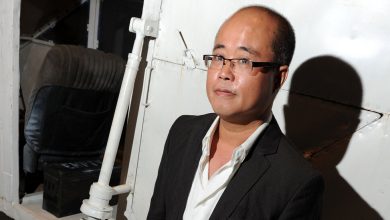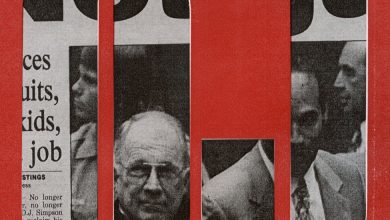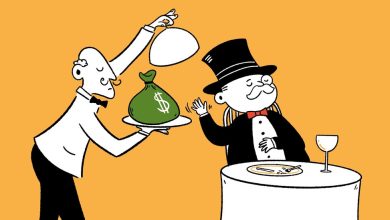The Jan. 6 Panel After 8 Hearings: Where Will the Evidence Lead?

Comprehensive, compellingly scripted and packed with details, the eight hearings of the House committee investigating the Jan. 6 attack have laid out a powerful account of President Donald J. Trump’s efforts to overturn the 2020 election.
The select committee assembled a mass of evidence and testimony — provided in large part by Mr. Trump’s aides and other Republicans — not only for the judgment of history but for the purpose of two more immediate and related goals that the panel’s leaders highlighted during the hearing on Thursday night.
One, as Representative Liz Cheney, the Wyoming Republican who is the panel’s vice chair, said explicitly, is to convince voters that Mr. Trump, who has made clear he is likely to run for president in 2024, should be disqualified from holding the office again.
“Every American must consider this,” Ms. Cheney said. “Can a president who is willing to make the choices Donald Trump made during the violence of Jan. 6 ever be trusted with any position of authority in our great nation again?”
The other goal, as the committee has been signaling for months, is to pressure the Justice Department to pursue a more urgent and aggressive investigation into whether Mr. Trump could be prosecuted for his actions.
“There needs to be accountability, accountability under the law, accountability to the American people, accountability at every level,” said Representative Bennie Thompson, the Mississippi Democrat who is the panel’s chairman.
“If there is no accountability for Jan. 6, for every part of this scheme, I fear that we will not overcome the ongoing threat to our democracy,” he said. “There must be stiff consequences for those responsible.”
The extent to which the committee’s work imposes a political cost on Mr. Trump by changing views of him among persuadable voters might not be fully clear until the next campaign gets underway. And the committee has yet to decide whether to make a criminal referral to the Justice Department, a step that would be entirely symbolic and would not bind federal prosecutors to the case against Mr. Trump, as it has been laid out in the hearings.
But at a minimum, the committee’s hearings have created a backdrop to the early maneuvering around the 2024 campaign that presents challenges for Mr. Trump among independents and Republicans who might want a new face and a more forward-looking candidate. Indeed, the panel’s use of military leaders, top Trump aides and loyal Republicans to narrate its case has arguably been intended to speak to those potential voters.
Key Revelations From the Jan. 6 Hearings
Making a case against Trump. The House committee investigating the Jan. 6 attack is laying out evidence that could allow prosecutors to indict former President Donald J. Trump, though the path to a criminal trial is uncertain. Here are the main themes that have emerged so far:
An unsettling narrative. During the first hearing, the committee described in vivid detail what it characterized as an attempted coup orchestrated by the former president that culminated in the assault on the Capitol. At the heart of the gripping story were three main players: Mr. Trump, the Proud Boys and a Capitol Police officer.
Creating election lies. In its second hearing, the panel showed how Mr. Trump ignored aides and advisers as he declared victory prematurely and relentlessly pressed claims of fraud he was told were wrong. “He’s become detached from reality if he really believes this stuff,” William P. Barr, the former attorney general, said of Mr. Trump during a videotaped interview.
Pressuring Pence. Mr. Trump continued pressuring Vice President Mike Pence to go along with a plan to overturn his loss even after he was told it was illegal, according to testimony laid out by the panel during the third hearing. The committee showed how Mr. Trump’s actions led his supporters to storm the Capitol, sending Mr. Pence fleeing for his life.
Fake elector plan. The committee used its fourth hearing to detail how Mr. Trump was personally involved in a scheme to put forward fake electors. The panel also presented fresh details on how the former president leaned on state officials to invalidate his defeat, opening them up to violent threats when they refused.
Strong arming the Justice Dept. During the fifth hearing, the panel explored Mr. Trump’s wide-ranging and relentless scheme to misuse the Justice Department to keep himself in power. The panel also presented evidence that at least half a dozen Republican members of Congress sought pre-emptive pardons.
The surprise hearing. Cassidy Hutchinson, a former White House aide, delivered explosive testimony during the panel’s sixth session, saying that the president knew the crowd on Jan. 6 was armed, but wanted to loosen security. She also painted Mark Meadows, the White House chief of staff, as disengaged and unwilling to act as rioters approached the Capitol.
Planning a march. Mr. Trump planned to lead a march to the Capitol on Jan. 6 but wanted it to look spontaneous, the committee revealed during its seventh hearing. Representative Liz Cheney also said that Mr. Trump had reached out to a witness in the panel’s investigation, and that the committee had informed the Justice Department of the approach.
A “complete dereliction” of duty. In the final public hearing of the summer, the panel accused the former president of dereliction of duty for failing to act to stop the Capitol assault. The committee documented how, over 187 minutes, Mr. Trump had ignored pleas to call off the mob and then refused to say the election was over even a day after the attack.
The hearings have also generated open and growing pressure on Attorney General Merrick B. Garland, who responded this week by saying that “no person” is above the law.
The committee now plans to continue its investigation through the summer and hold more public hearings in September. It has produced a wealth of documentary evidence of the extent of Mr. Trump’s efforts to hold onto power and has shown signs of breaking through to the audiences it most wants to reach.
Here is a summary of its work so far.
The Events of Jan. 6 Began Well Before That Day
The phrase “Jan. 6” has always been something of a misnomer, shorthand that is not quite accurate for the turbulent period from Election Day in November 2020 to the afternoon the Capitol was stormed.
One of the committee’s central goals has been to identify and home in on the various ways in which Mr. Trump and his allies sought to overturn the election results and to show how these intersecting and overlapping efforts culminated in the violence on Capitol Hill.
Working in TV-friendly episodes, the panel began by presenting evidence that Mr. Trump knew he had lost but nonetheless spread the “Big Lie” of election fraud in dozens of lawsuits that ultimately failed in court. The panel also showed how, as these suits were being filed, the Trump campaign and its Republican allies used claims of a rigged election they knew were false to mislead donors and raise as much as $250 million.
“Not only was there the big lie,” Representative Zoe Lofgren, Democrat of California, said at a hearing last month, “there was the big rip-off.”
The committee went on to explore a series of linked attempts to attack the democratic process at what amounted to its key points of vulnerability. That involved Mr. Trump and his allies mounting pressure campaigns against local officials in swing states, top officials in the Justice Department and ultimately Vice President Mike Pence, seeking to persuade them to disregard established norms and keep Mr. Trump in the White House.
With his options for remaining in power running thin, the president eventually called his supporters to Washington for a “wild” protest on Jan. 6, 2021, the committee showed. That event, of course, ended when a mob chased lawmakers from the Capitol and Mr. Trump watched from the White House, unwilling to use his powers to call off the rioters and quell the violence.

The House committee investigating the Jan. 6 riot documented President Donald J. Trump’s inaction in calling off the mob during the 187 minutes after rioters descended on the Capitol.CreditCredit…Doug Mills/The New York Times
Trump Was Kept at the Center of It All
While the hearings have featured a wide-ranging cast of characters — grizzled local politicians, injured Capitol Police officers, young White House aides, even a tattooed former militiaman — at every step of the way, the committee has kept the spotlight tightly focused on Mr. Trump.
Again and again, the panel has painted him as both the schemer in chief and the ultimate intended beneficiary.
In its presentation about the effort to pressure Mr. Pence, for instance, the committee made sure to introduce evidence that Mr. Trump had gone along with the plan even after he was explicitly told it was illegal.
The committee also directly implicated Mr. Trump in the effort to cajole lawmakers into creating false slates of electors that showed he had won in states that went for Joseph R. Biden Jr. The panel showed this by demonstrating how Mr. Trump called Ronna McDaniel, the chairwoman of the Republican National Committee, to ask her to discuss the fake elector plan with one of his outside lawyers, John Eastman.
In the days leading up to Jan. 6, the panel showed, Mr. Trump took overt steps not only to bring a crowd of his supporters to Washington but also to plan for a march on the Capitol while trying to make it seem spontaneous.
He continued to push aggressively to go to the Capitol even after learning that his supporters in the crowd were armed. And as the violence erupted in front of the nation on television, Mr. Trump waited hours before doing anything to stop it. He and his lawyer continued to call senators in the hopes of blocking or delaying certification of Mr. Biden’s victory.
“Over multiple months, Donald Trump oversaw and coordinated a sophisticated, seven-part plan to overturn the presidential election and prevent the transfer of presidential power,” Ms. Cheney said last month, at the committee’s first hearing.
The Message Got Through to the Justice Department
The Justice Department, armed with the most resources and powers in the government, takes the lead in investigating in most high-profile inquiries, often stiff-arming Congress or local prosecutors. But the Jan. 6 hearings have shown how the committee has — at least for now and at least in terms of its public revelations — generally reversed those roles.
One example was the testimony to the committee — first in private and then in public — of a junior White House aide, Cassidy Hutchinson. She had not met with Justice Department investigators, nor were prosecutors given any recordings of her testimony or documents beforehand.
Ms. Hutchinson’s star turn in front of the committee intensified the scrutiny of Mr. Garland’s handling of the explosive question of whether and how to pursue a criminal investigation of Mr. Trump.
While several lanes of the criminal inquiry that are underway could ultimately uncover evidence against the former president, it was only recently revealed that top officials in the Justice Department were thinking specifically about Mr. Trump’s exposure to criminal liability and that more resources had been dedicated to the pre-existing strands of the inquiry.
In response to questions from reporters on Wednesday, Mr. Garland provided one of his fullest public statements about the direction of the investigation. While the Justice Department does its investigation out of the public’s view, he said, “every person who is criminally responsible” will be held accountable and “no person is above the law in this country.”
“I can’t say it more clearly than that,” he added.
Mr. Garland also said there was nothing that prevented the Justice Department “from investigating anyone who is criminally responsible for an attempt to undo a democratic election.”
The Work Goes On
The committee’s success in unearthing new information — and in persuading new witnesses to come forward — appears to be encouraging more people to be willing to talk and provide additional information. The panel now says it plans to continue its investigation through the summer and return for another round of hearings in September.
Representative Elaine Luria, Democrat of Virginia, noted on Thursday night that the panel expects to hear more sworn testimony about the role that the Secret Service played in the events of Jan. 6. The Homeland Security Department’s inspector general is examining the purge of text messages from the phones of Secret Service agents around the time of the attack, and it has characterized its inquiry as a criminal investigation.
The committee is also likely to further explore decisions surrounding the deployment of the National Guard that day.
Representative Adam Kinzinger, Republican of Illinois, suggested another avenue of inquiry when he said near the end of the hearing on Thursday that the “militant, intolerant ideologies” and “the weird fantasies and disinformation” that Mr. Trump set in motion after the election remained a threat to American democracy.
“They’re all still out there, ready to go,” Mr. Kinzinger said, suggesting that the committee could examine Mr. Trump’s continued efforts after Jan. 6 to influence the election system for his own ends.




